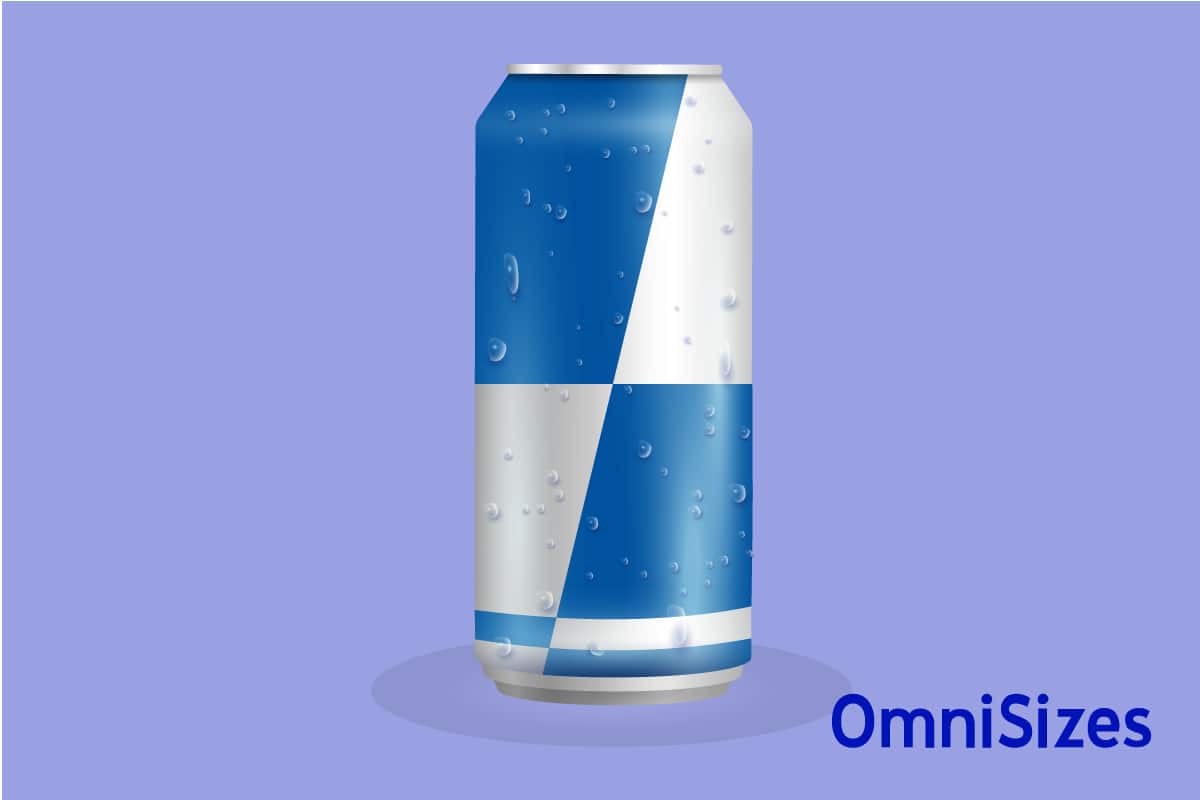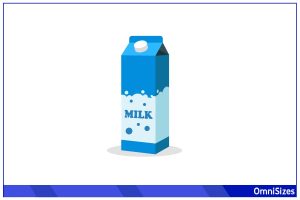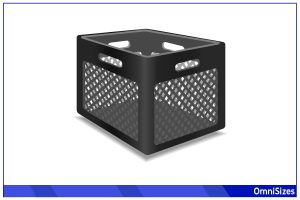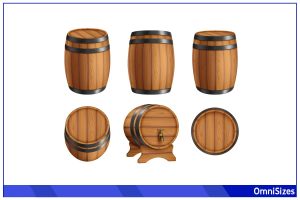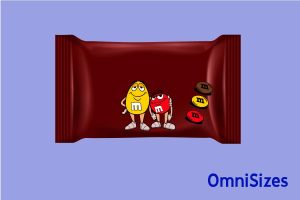Red Bull can sizes have become a topic of interest for many, as the brand’s popularity has soared worldwide. As an energy drink that powers millions daily, the choice of its container size affects both its consumption and environmental footprint.
Red Bull offers a range of can sizes, from the smaller 8.4 oz (250 ml) measuring roughly 2.12 × 4.75 inches (5.4 × 12.1 centimeters) to their larger 20 oz (591 ml) can, sizing up at 3.15 × 7.9 inches (8 × 20 centimeters). The typical 12-oz can measures 2.25 × 6.125 inches (5.7 × 15.6 centimeters).
This article will go into further detail about the variations of Red Bull’s can sizes, as well as the health implications of consuming this energy drink.
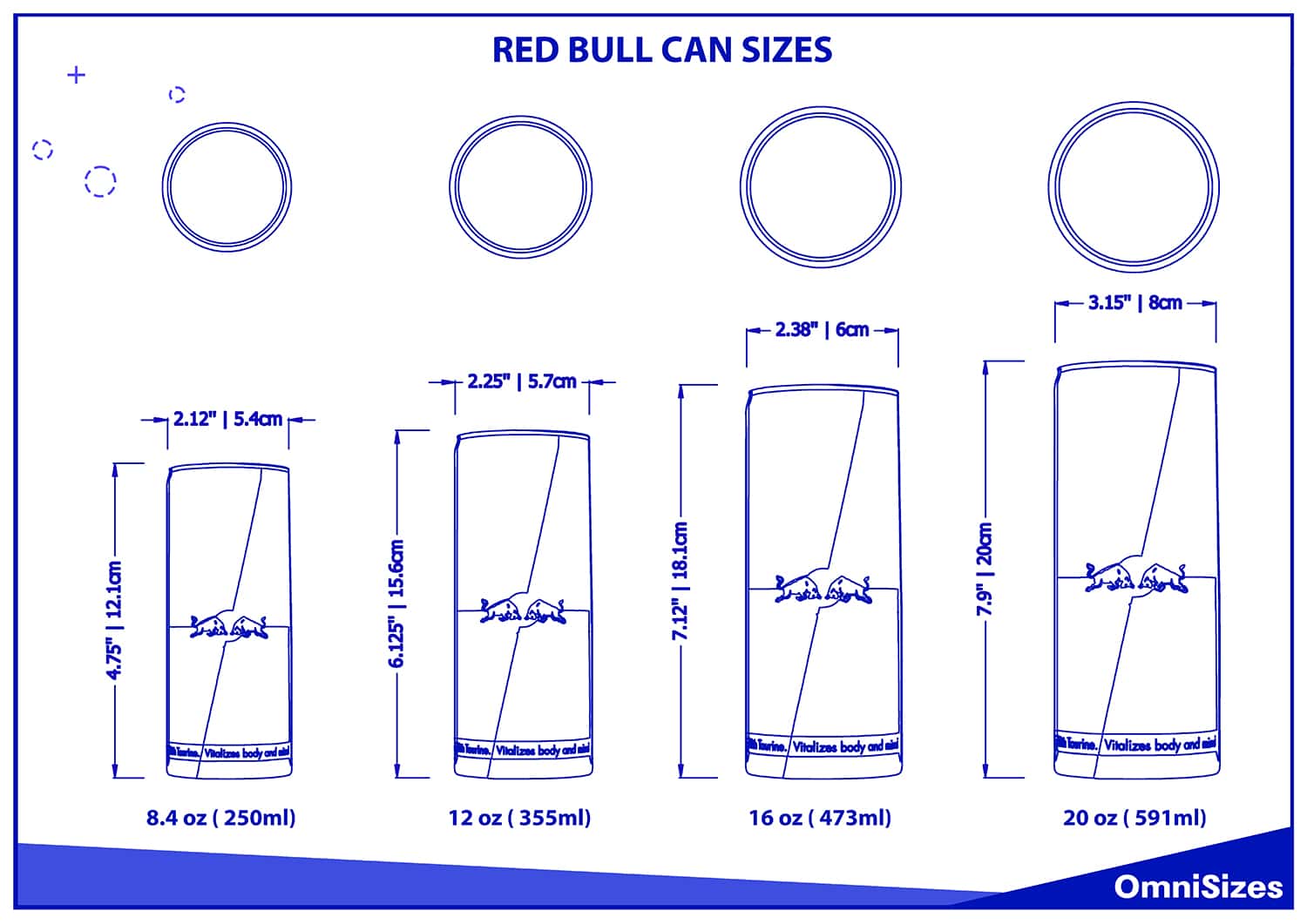
Different Red Bull Can Sizes and Their Features
The variety of Red Bull can sizes cater to different needs, whether it’s a quick pick-me-up or sustained energy for longer tasks. Here’s a detailed look at these sizes and their distinct features.
8.4 oz (250 ml)
The 8.4 oz (250 ml) can, measuring approximately 2.12 × 4.75 inches (5.4 × 12.1 centimeters), is the pioneering size introduced by Red Bull. Known as the original, this size is often chosen by individuals looking for a quick energy boost.
For comparison, the standard coke can dimensions are 4.83 inches in height and 2.13 inches in diameter, making it slightly taller and narrower than the original Red Bull size.
12 oz (355 ml)
A step up from the original, the 12 oz (355 ml) can, with dimensions of roughly 2.25 × 6.125 inches (5.7 × 15.6 centimeters), offers more for those with a thirst for both volume and energy.
This larger can contains a slightly more generous caffeine content, helping students during late-night study sessions or professionals tackling extended work hours. Its design is strikingly similar to the 8.4 oz.
16 oz (473 ml)
For those who require even more, the 16 oz (473 ml) can comes into play. Measuring about 2.38 × 7.12 inches (6 × 18.1 centimeters), this size has seen growing popularity in recent years.
Its elevated caffeine level makes it well-suited for longer activities like road trips or exhaustive physical tasks. The design of the can is bolder, with larger graphics, reflecting the heightened energy content within.
20 oz (591 ml)
The 20 oz (591 ml) can, sizing up at 3.15 × 7.9 inches (8 × 20 centimeters), is the biggest option in the Red Bull lineup. Designed for extended consumption, it’s a go-to choice for those planning lengthy endeavors, be it gaming marathons or back-to-back meetings.
In terms of appearance and features, there’s no difference between it and its smaller counterparts. The only thing worth mentioning is its larger surface, graphics, and text.
Red Bull Safety: How Much Is Too Much?
Red Bull has become a staple for many seeking an energy boost, but like all consumables, moderation is key.
Caffeine Content
Every can of Red Bull contains caffeine, a stimulant known for increasing alertness. An 8.4 oz (250 ml) can has about 80 mg of caffeine, roughly equivalent to a cup of home-brewed coffee. While caffeine can be beneficial, excessive intake can lead to side effects like jitters, insomnia, and increased heart rate.
The general guideline suggests that adults should limit their daily caffeine intake to 400 mg or less, which equates to about five 8.4 oz cans of Red Bull. However, individual tolerance varies, so be aware of your own limits.
Sugar Levels
Red Bull, especially the regular variant, contains sugar. A standard 8.4 oz (250 ml) can packs approximately 27 grams of sugar. While sugar can offer a quick energy spike, excessive consumption is linked to health concerns like weight gain, tooth decay, and increased risk of chronic diseases.
The World Health Organization recommends that added sugars should make up less than 10% of total daily energy intake, translating to around 50 grams of sugar for an average adult. This means consuming more than two cans daily might exceed the recommended sugar intake.
Taurine and Other Ingredients
Taurine is another active ingredient in Red Bull, often spotlighted for its supposed energy-boosting properties. While there’s limited evidence about its long-term effects, most studies suggest that the taurine levels in Red Bull (about 1000 mg per 8.4 oz can) are generally safe for most people.
Besides taurine, Red Bull contains B-vitamins and other compounds. Though these ingredients are present in safe amounts per can, you still need to consider cumulative intake if consuming multiple cans or combining with other supplements.
Is Red Bull the Same as Kratingdaeng?
Red Bull and Kratingdaeng are both popular energy drinks that have energized millions around the globe. However, their origins, ingredients, and formulations are different.
Origins and History
Red Bull finds its roots in the 1980s when Austrian entrepreneur Dietrich Mateschitz collaborated with Thai businessman Chaleo Yoovidhya. Mateschitz got inspired by the original Thai drink called Kratingdaeng, which was developed by Chaleo in the 1970s.
While Kratingdaeng was primarily marketed to Thai laborers to boost their energy, Mateschitz saw its potential for a broader audience. Together, they modified the formula and branding to cater to Western tastes, leading to the birth of Red Bull.
Flavor and Formulation
Kratingdaeng has a sweeter, syrup-like consistency compared to the more carbonated and tangy flavor of Red Bull. The sweetness in Kratingdaeng primarily stems from its high sugar content, which was suitable for the Thai palette when it was created.
Red Bull, tailored for the Western market, toned down the sweetness and added carbonation for a fizzy kick. While both drinks contain key ingredients like caffeine and taurine, their quantities and some other ingredients might vary.
Packaging and Branding
Kratingdaeng, which translates to “Red Bull” in English, features two red bulls against a sun on its label, symbolizing power and endurance. Its packaging is more traditional, often found in a gold-colored, non-carbonated bottle.
Red Bull, on the other hand, is globally recognized by its slim silver cans featuring blue and silver bulls. The branding for Red Bull has been aggressive and modern, with slogans like “Red Bull gives you wings” and extensive marketing campaigns, especially in sports and adventure niches.
